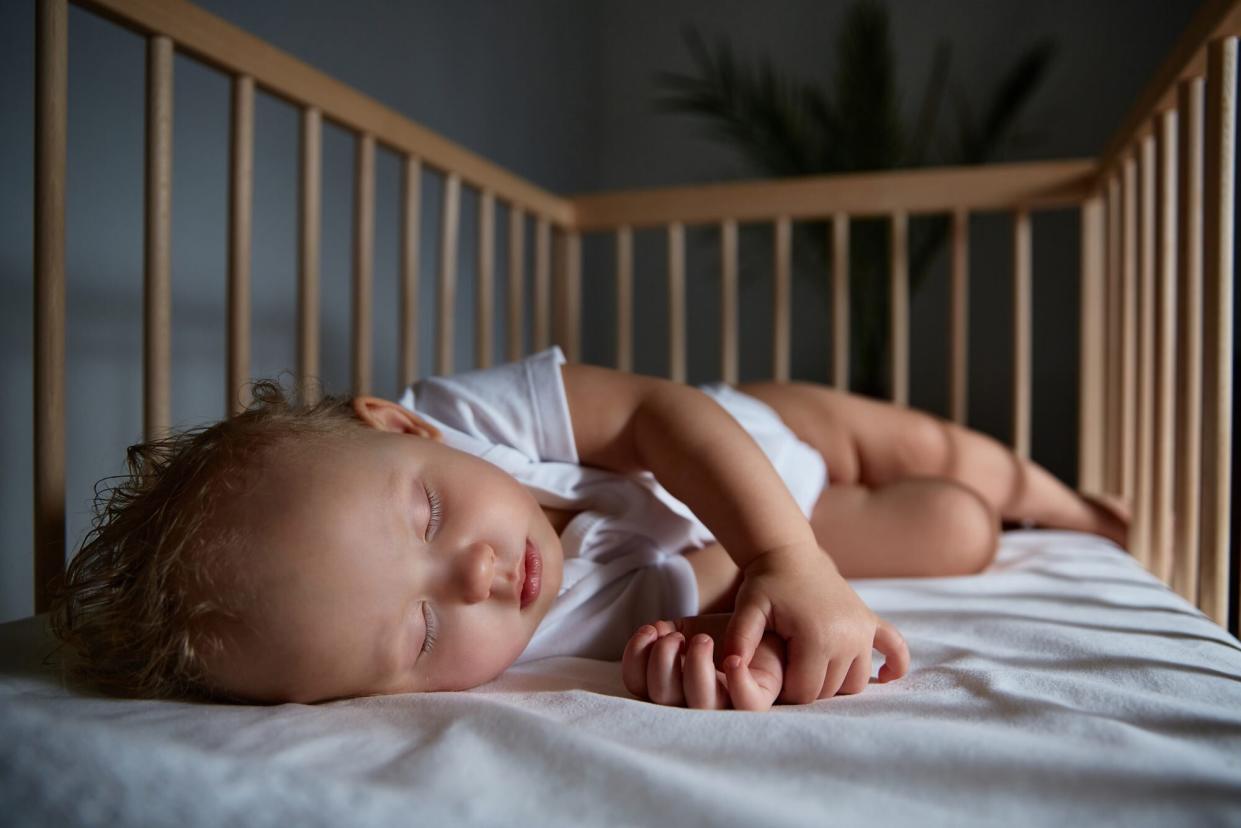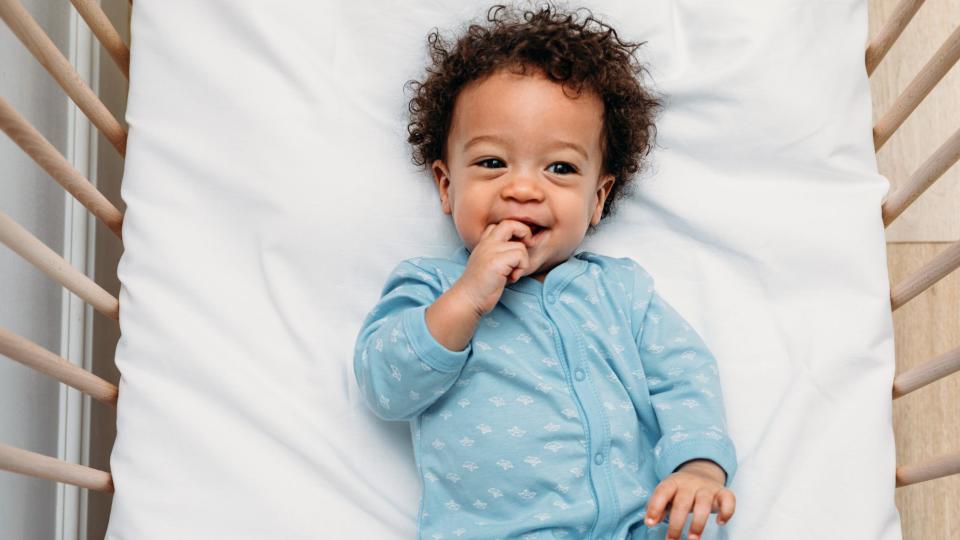No Co-Sleeping or Crib Décor, AAP Says in New Baby Safe Sleep Guidance: 'The Evidence Is Clear'

Getty Images/EyeEm Baby sleeping
The American Academy of Pediatrics is emphasizing that co-sleeping with and having objects around a sleeping baby can pose serious risks, and should not be practiced under any circumstances.
On Tuesday, the group released its first update to its baby safe-sleep guidelines in more than five years, explaining the correlation between co-sleeping/placing items in a crib and an "increased risk of [sudden infant death syndrome (SIDS)] and suffocation."
Aside from recommending that parents and caregivers place babies on their backs to sleep until 1 year of age, they also advise to "Use a firm, flat, non-inclined sleep surface (e.g., tightly fitting mattress in a safety-approved crib) covered by a fitted sheet with no other bedding or soft objects to reduce the risk of suffocation or wedging or entrapment." Objects advised against include crib bumpers and liners, even mesh ones.
Additionally, the group urges parents and caregivers not to use products inclined more than 10 degrees for infant sleep, as babies on inclined surfaces "can more easily flex their trunk and lift their head, facilitating rolling onto the side or prone, at which point they are at higher risk for muscle fatigue and potential suffocation."
"It is recommended that infants sleep in the parents' room, close to the parents' bed, but on a separate surface designed for infants, ideally for at least the first 6 months," the AAP adds.
Never miss a story — sign up for PEOPLE's free daily newsletter to stay up-to-date on the best of what PEOPLE has to offer, from juicy celebrity news to compelling human-interest stories.

Getty Images/EyeEm Baby in crib
Furthermore, "The AAP recommends room-sharing, because this arrangement decreases the risk of SIDS by as much as 50% and is safer than bed-sharing or solitary sleeping (when the infant is in a separate room). In addition, this arrangement is most likely to prevent suffocation, strangulation and entrapment that may occur when the infant is sleeping in the adult bed."
The group continues to advise room-sharing "ideally for at least the first six months," explaining that the practice "is protective for the first year of life, and there is no specific evidence for when it might be safe to moving an infant to a separate room before 1 year of age."
"The rates of sleep-related deaths are highest in the first six months, so room-sharing during this vulnerable period is especially important," they add.
The AAP recommends placing the baby's crib, bassinet or play yard "close to the parents' bed so that the infant is within view and within arms' reach," which "can facilitate feeding, comforting and monitoring of the infant to give parents peace of mind about their infant's safety."
RELATED VIDEO: Baby Myths: Baby Bed Time
In the report, the AAP says about 3,500 infants die each year in the U.S. from sleep-related incidents, "including SIDS, ill-defined deaths and accidental suffocation and strangulation in bed."
Dr. Rebecca Carlin, an assistant professor of pediatrics at Columbia University Irving Medical Center who co-authored the AAP's new report, told CNN, "The evidence is clear that (co-sleeping) significantly raises the risk of a baby's injury or death."
"For that reason AAP cannot support bed-sharing under any circumstances," she added.
Lead author Dr. Rachel Moon, a professor of pediatrics at the University of Virginia, told CNN in a statement, "We've made great strides in learning what keeps infants safe during sleep but much work still needs to be done."

